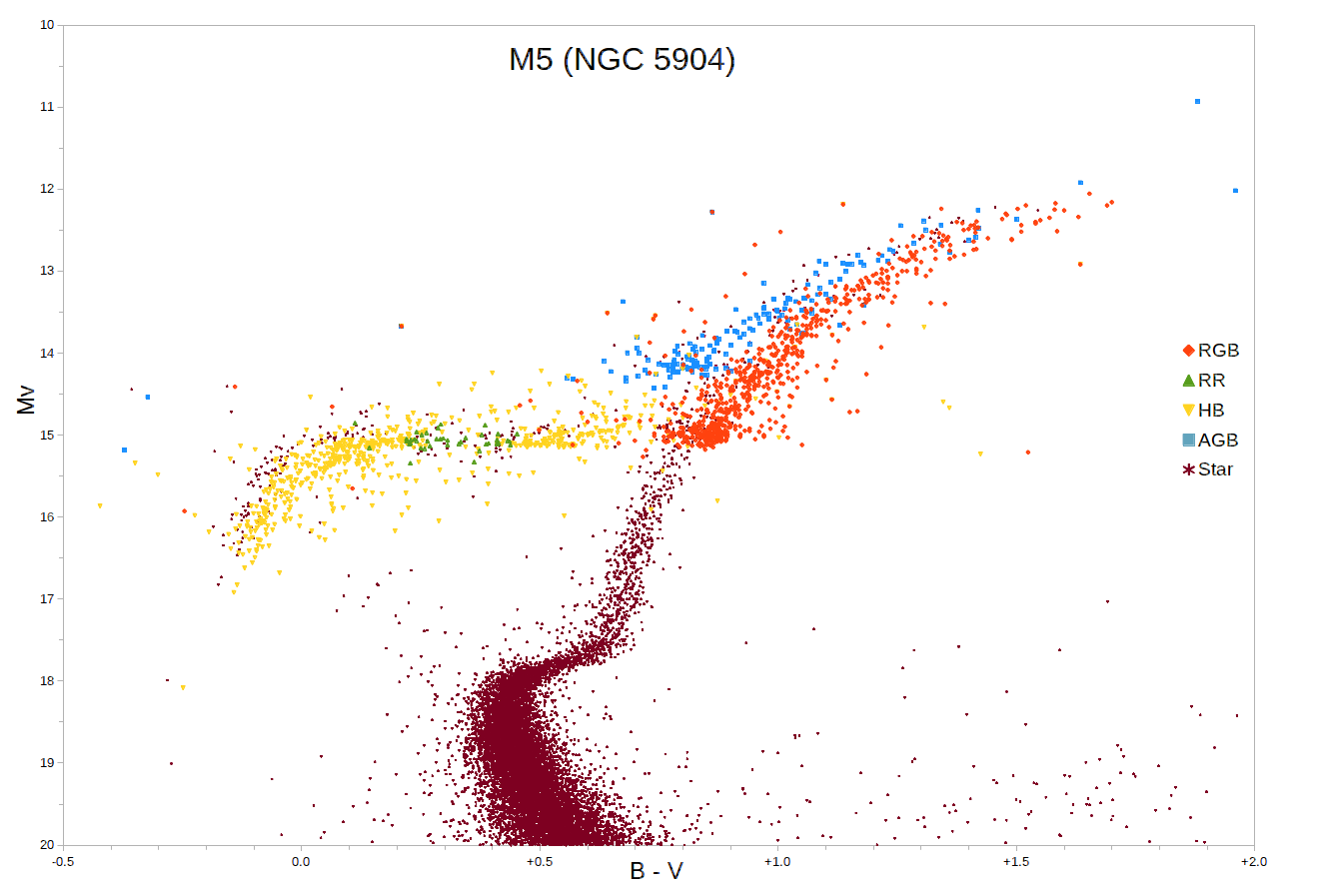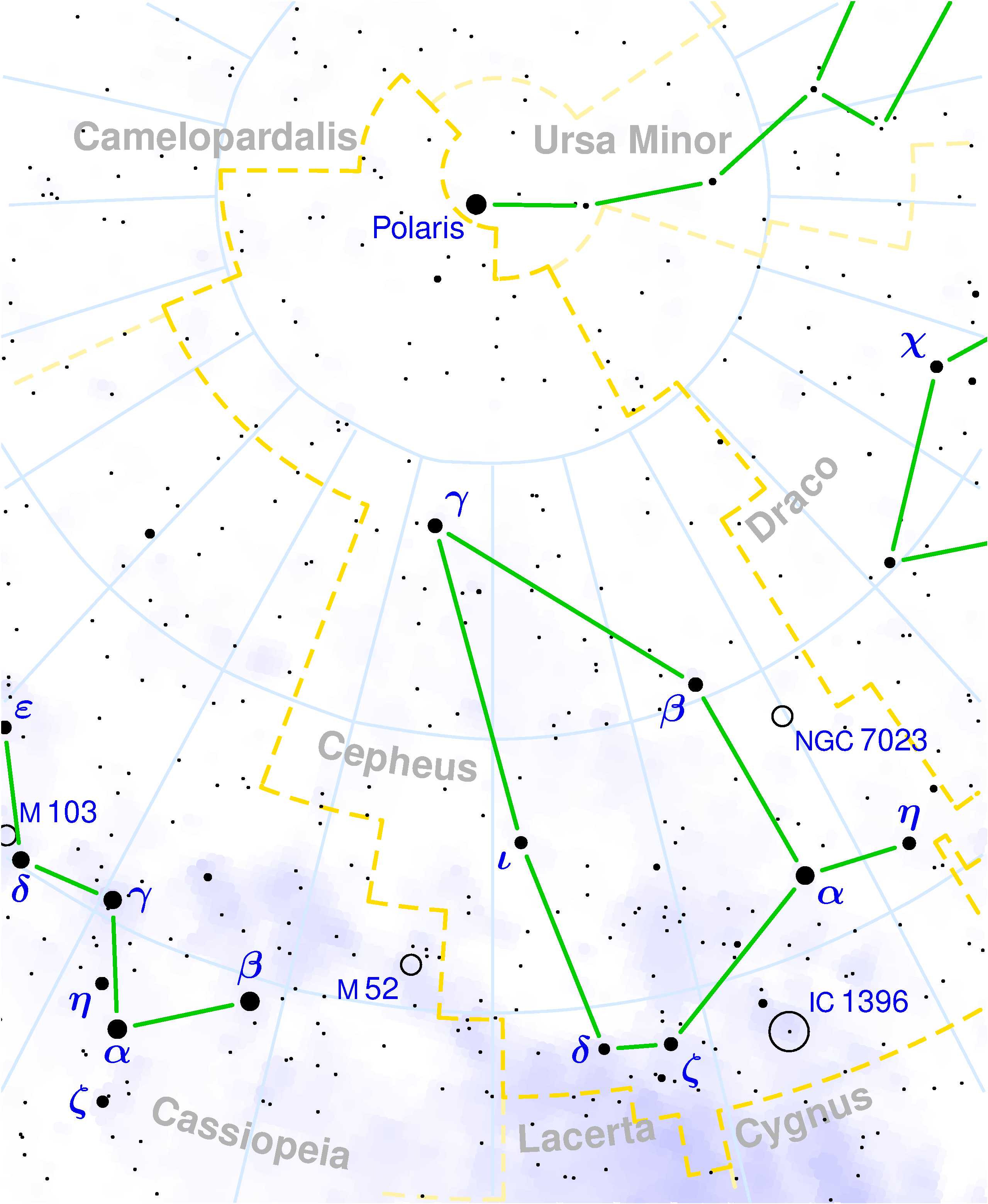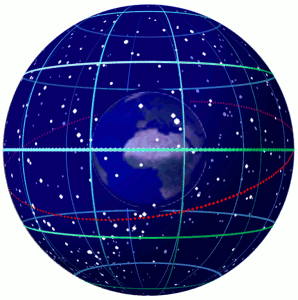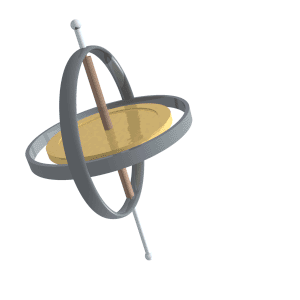|
Iota Cephei
Iota Cephei (ι Cephei, ι Cep) is a star in the northern constellation Cepheus. Based upon an annual parallax shift of as seen from the Earth, it is located about from the Sun. The star is visible to the naked eye with an apparent visual magnitude of 3.5. It is a K-type giant star with a stellar classification of K0 III. It is currently at an evolutionary stage known as the red clump, indicating that it is generating energy through the fusion of helium at its core. It has 11 times the Sun's radius and about 2.15 times the mass of the Sun. Its luminosity is 57 times that of the Sun, and its surface has an effective temperature of 4,768 K. Pole star Iota Cephei is located within 5° of the precessional path traced across the celestial sphere by the Earth's North pole. In about 3,000 years, it will be one of the closest visible stars to the celestial north pole, along with Alfirk Beta Cephei (β Cephei, abbreviated Beta Cep, β Cep) is a triple ... [...More Info...] [...Related Items...] OR: [Wikipedia] [Google] [Baidu] |
J2000
In astronomy, an epoch or reference epoch is a moment in time used as a reference point for some time-varying astronomical quantity. It is useful for the celestial coordinates or orbital elements of a celestial body, as they are subject to perturbations and vary with time. These time-varying astronomical quantities might include, for example, the mean longitude or mean anomaly of a body, the node of its orbit relative to a reference plane, the direction of the apogee or aphelion of its orbit, or the size of the major axis of its orbit. The main use of astronomical quantities specified in this way is to calculate other relevant parameters of motion, in order to predict future positions and velocities. The applied tools of the disciplines of celestial mechanics or its subfield orbital mechanics (for predicting orbital paths and positions for bodies in motion under the gravitational effects of other bodies) can be used to generate an ephemeris, a table of values giving the positions ... [...More Info...] [...Related Items...] OR: [Wikipedia] [Google] [Baidu] |
Stellar Evolution
Stellar evolution is the process by which a star changes over the course of time. Depending on the mass of the star, its lifetime can range from a few million years for the most massive to trillions of years for the least massive, which is considerably longer than the age of the universe. The table shows the lifetimes of stars as a function of their masses. All stars are formed from collapsing clouds of gas and dust, often called nebulae or molecular clouds. Over the course of millions of years, these protostars settle down into a state of equilibrium, becoming what is known as a main-sequence star. Nuclear fusion powers a star for most of its existence. Initially the energy is generated by the fusion of hydrogen atoms at the core of the main-sequence star. Later, as the preponderance of atoms at the core becomes helium, stars like the Sun begin to fuse hydrogen along a spherical shell surrounding the core. This process causes the star to gradually grow in size, pass ... [...More Info...] [...Related Items...] OR: [Wikipedia] [Google] [Baidu] |
Horizontal-branch Stars
The horizontal branch (HB) is a stage of stellar evolution that immediately follows the red-giant branch in stars whose masses are similar to the Sun's. Horizontal-branch stars are powered by helium fusion in the core (via the triple-alpha process) and by hydrogen fusion (via the CNO cycle) in a shell surrounding the core. The onset of core helium fusion at the tip of the red-giant branch causes substantial changes in stellar structure, resulting in an overall reduction in luminosity, some contraction of the stellar envelope, and the surface reaching higher temperatures. Discovery Horizontal branch stars were discovered with the first deep photographic photometric studies of globular clusters and were notable for being absent from all open clusters that had been studied up to that time. The horizontal branch is so named because in low-metallicity star collections like globular clusters, HB stars lie along a roughly horizontal line in a Hertzsprung–Russell diagram. Because t ... [...More Info...] [...Related Items...] OR: [Wikipedia] [Google] [Baidu] |
K-type Giants , an unusual kind of asteroid
{{disambig ...
K-type may refer to: * AEC K-type, a bus chassis *K-type star, a stellar spectral classification * K-type filter, a type of electronic filter *K-type asteroid K-type asteroids are relatively uncommon asteroids with a moderately reddish spectrum shortwards of 0.75 μm, and a slight bluish trend longwards of this. They have a low albedo. Their spectrum resembles that of CV and CO meteorites. A larger K ty ... [...More Info...] [...Related Items...] OR: [Wikipedia] [Google] [Baidu] |
Monthly Notices Of The Royal Astronomical Society
''Monthly Notices of the Royal Astronomical Society'' (MNRAS) is a peer-reviewed scientific journal covering research in astronomy and astrophysics. It has been in continuous existence since 1827 and publishes letters and papers reporting original research in relevant fields. Despite the name, the journal is no longer monthly, nor does it carry the notices of the Royal Astronomical Society. History The first issue of MNRAS was published on 9 February 1827 as ''Monthly Notices of the Astronomical Society of London'' and it has been in continuous publication ever since. It took its current name from the second volume, after the Astronomical Society of London became the Royal Astronomical Society (RAS). Until 1960 it carried the monthly notices of the RAS, at which time these were transferred to the newly established '' Quarterly Journal of the Royal Astronomical Society'' (1960–1996) and then to its successor journal '' Astronomy & Geophysics'' (since 1997). Until 1965, MNRAS wa ... [...More Info...] [...Related Items...] OR: [Wikipedia] [Google] [Baidu] |
Alderamin
Alpha Cephei (α Cephei, abbreviated Alpha Cep, α Cep), officially named Alderamin , is a second magnitude star in the constellation of Cepheus near the northern pole. The star is relatively close to Earth at 49 light years (''ly''). Nomenclature ''α Cephei'' ( Latinised to ''Alpha Cephei'') is the star's Bayer designation. It has a Flamsteed designation of 5 Cephei. It bore the traditional name ''Alderamin'', a contraction of the Arabic phrase ''الذراع اليمين'' ''al-dhirā‘ al-yamīn'', meaning "the right arm". In 2016, the International Astronomical Union organized a Working Group on Star Names (WGSN) to catalog and standardize proper names for stars. The WGSN's first bulletin of July 2016 included a table of the first two batches of names approved by the WGSN; which included ''Alderamin'' for this star. Visibility With a declination in excess of 62 degrees north, Alpha Cephei never rises south of −27° latitude, which means for much of South Am ... [...More Info...] [...Related Items...] OR: [Wikipedia] [Google] [Baidu] |
Gamma Cephei
Gamma Cephei (γ Cephei, abbreviated Gamma Cep, γ Cep) is a binary star system approximately 45 light-years away in the constellation of Cepheus. The primary (designated Gamma Cephei A, officially named Errai , the traditional name of the system) is a stellar class K1 orange giant or subgiant star; it has a red dwarf companion (Gamma Cephei B). An exoplanet (designated Gamma Cephei Ab, later named Tadmor) has been confirmed to be orbiting the primary. Gamma Cephei is the naked-eye star that will succeed Polaris as the Earth's northern pole star, due to the precession of the equinoxes. It will be closer to the northern celestial pole than Polaris around 3000 CE and will make its closest approach around 4000 CE. The 'title' will pass to Iota Cephei some time around 5200 CE. Description Gamma Cephei has an apparent magnitude of 3.21, nearly all of which is accounted for by Gamma Cephei A. The primary is about 3.25 billion years old and has evolved off the main seque ... [...More Info...] [...Related Items...] OR: [Wikipedia] [Google] [Baidu] |
Pole Star
A pole star or polar star is a star, preferably bright, nearly aligned with the axis of a rotating astronomical body. Currently, Earth's pole stars are Polaris (Alpha Ursae Minoris), a bright magnitude-2 star aligned approximately with its northern axis that serves as a pre-eminent star in celestial navigation, and a much dimmer magnitude-5.5 star on its southern axis, Polaris Australis (Sigma Octantis). From around 1700 BC until just after 300 AD, Kochab (Beta Ursae Minoris) and Pherkad (Gamma Ursae Minoris) were twin northern pole stars, though neither was as close to the pole as Polaris is now. History In classical antiquity, Beta Ursae Minoris (Kochab) was closer to the celestial north pole than Alpha Ursae Minoris. While there was no naked-eye star close to the pole, the midpoint between Alpha and Beta Ursae Minoris was reasonably close to the pole, and it appears that the entire constellation of Ursa Minor, in antiquity known as '' Cynosura'' (Greek Κυνό� ... [...More Info...] [...Related Items...] OR: [Wikipedia] [Google] [Baidu] |
Alfirk
Beta Cephei (β Cephei, abbreviated Beta Cep, β Cep) is a triple star system of the third magnitude in the constellation of Cepheus. Based on parallax measurements obtained during the Hipparcos mission, it is approximately 690 light-years distant from the Sun. It is the prototype of the Beta Cephei variable stars. It consists of a binary pair (designated Beta Cephei A) together with a third companion (B). The binary's two components are themselves designated Beta Cephei Aa (officially named Alfirk , the traditional name for the system) and Ab. Nomenclature ''β Cephei'' ( Latinised to ''Beta Cephei'') is the system's Bayer designation. The designations of the two constituents as ''Beta Cephei A'' and ''B'', and those of ''A's'' components - ''Beta Cephei Aa'' and ''Ab'' - derive from the convention used by the Washington Multiplicity Catalog (WMC) for multiple star systems, and adopted by the International Astronomical Union (IAU). Beta Cephei bore the traditional ... [...More Info...] [...Related Items...] OR: [Wikipedia] [Google] [Baidu] |
North Pole
The North Pole, also known as the Geographic North Pole or Terrestrial North Pole, is the point in the Northern Hemisphere where the Earth's rotation, Earth's axis of rotation meets its surface. It is called the True North Pole to distinguish from the Magnetic North Pole. The North Pole is by definition the northernmost point on the Earth, lying antipode (geography), antipodally to the South Pole. It defines geodetic latitude 90° North, as well as the direction of true north. At the North Pole all directions point south; all lines of longitude converge there, so its longitude can be defined as any degree value. No time zone has been assigned to the North Pole, so any time can be used as the local time. Along tight latitude circles, counterclockwise is east and clockwise is west. The North Pole is at the center of the Northern Hemisphere. The nearest land is usually said to be Kaffeklubben Island, off the northern coast of Greenland about away, though some perhaps semi-per ... [...More Info...] [...Related Items...] OR: [Wikipedia] [Google] [Baidu] |
Celestial Sphere
In astronomy and navigation, the celestial sphere is an abstract sphere that has an arbitrarily large radius and is concentric to Earth. All objects in the sky can be conceived as being projected upon the inner surface of the celestial sphere, which may be centered on Earth or the observer. If centered on the observer, half of the sphere would resemble a hemispherical screen over the observing location. The celestial sphere is a conceptual tool used in spherical astronomy to specify the position of an object in the sky without consideration of its linear distance from the observer. The celestial equator divides the celestial sphere into northern and southern hemispheres. Introduction Because astronomical objects are at such remote distances, casual observation of the sky offers no information on their actual distances. All celestial objects seem equally far away, as if fixed onto the inside of a sphere with a large but unknown radius, which appears to rotate west ... [...More Info...] [...Related Items...] OR: [Wikipedia] [Google] [Baidu] |
Precession
Precession is a change in the orientation of the rotational axis of a rotating body. In an appropriate reference frame it can be defined as a change in the first Euler angle, whereas the third Euler angle defines the rotation itself. In other words, if the axis of rotation of a body is itself rotating about a second axis, that body is said to be precessing about the second axis. A motion in which the second Euler angle changes is called ''nutation''. In physics, there are two types of precession: torque-free and torque-induced. In astronomy, ''precession'' refers to any of several slow changes in an astronomical body's rotational or orbital parameters. An important example is the steady change in the orientation of the axis of rotation of the Earth, known as the precession of the equinoxes. Torque-free Torque-free precession implies that no external moment (torque) is applied to the body. In torque-free precession, the angular momentum is a constant, but the angular vel ... [...More Info...] [...Related Items...] OR: [Wikipedia] [Google] [Baidu] |







